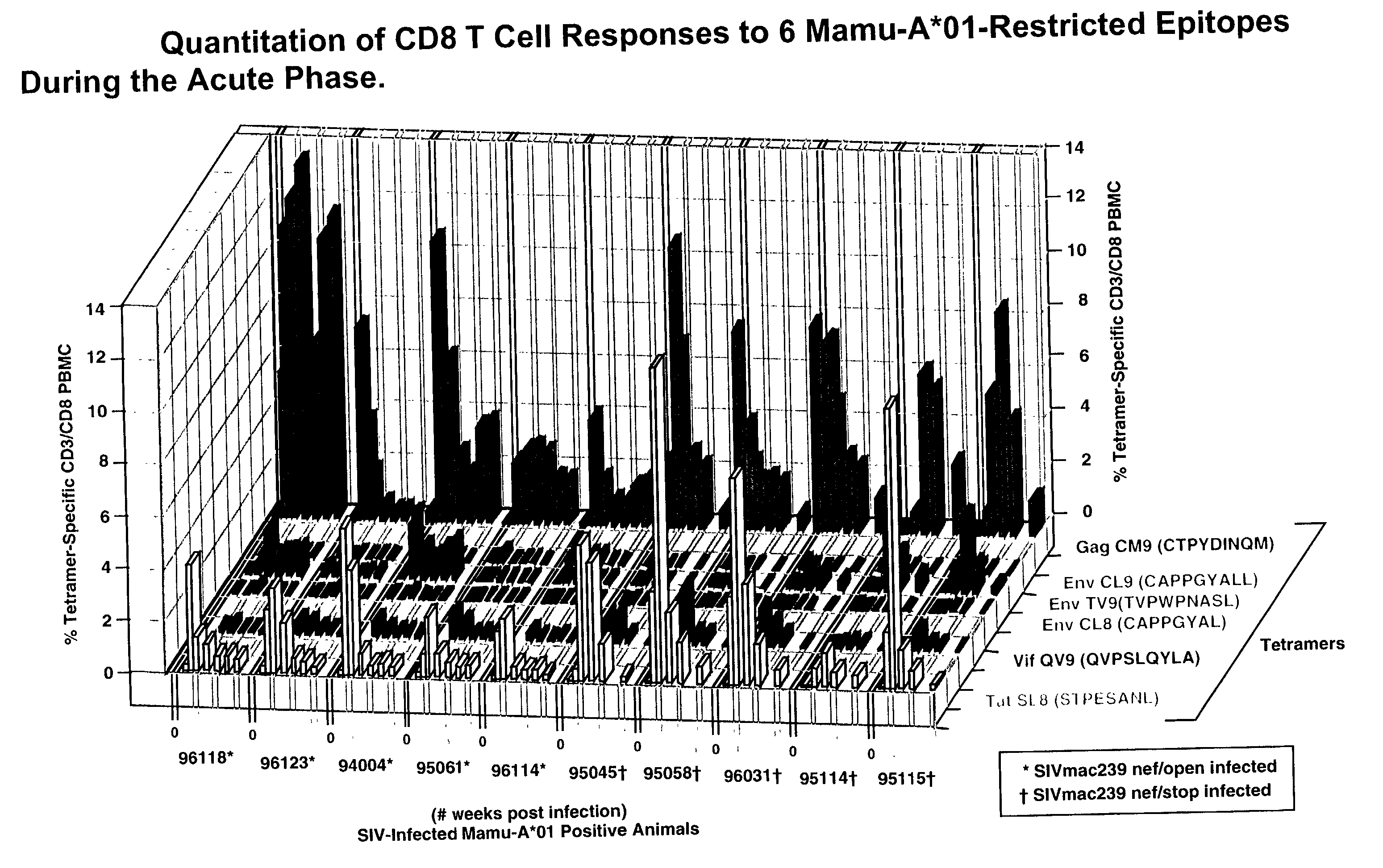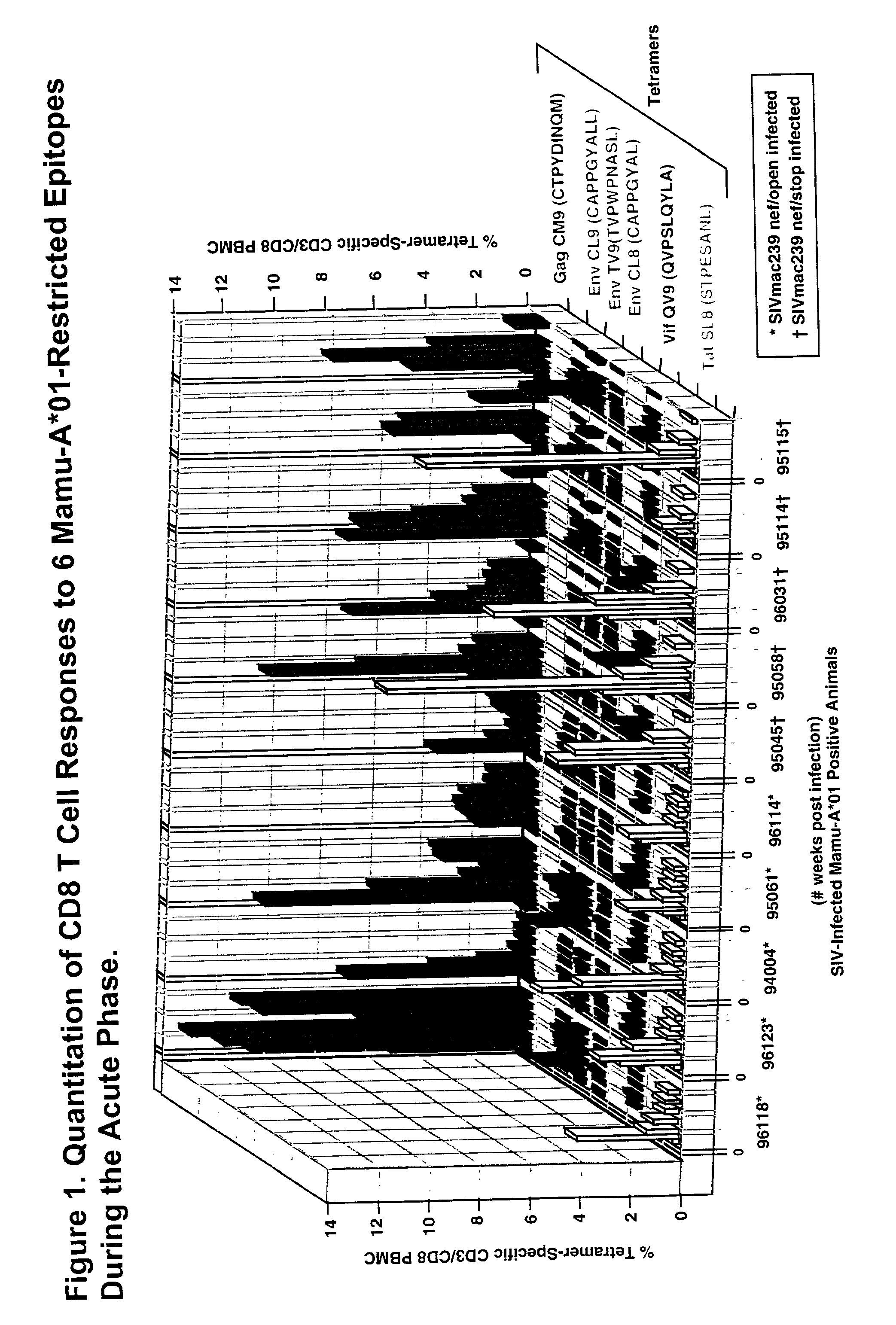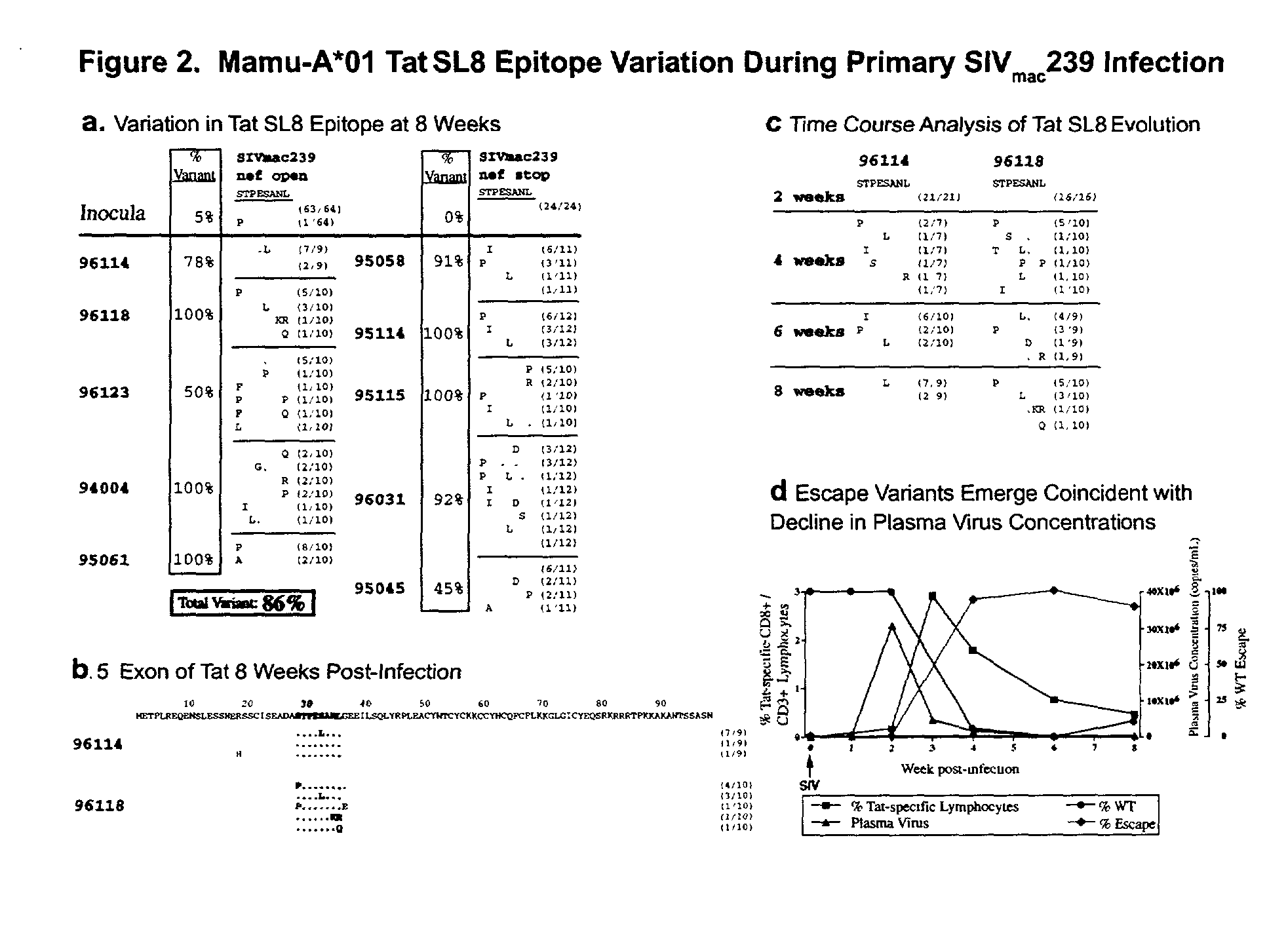Method for making an HIV vaccine
a technology for making a vaccine and a vaccine body, applied in the field of making a vaccine, can solve the problems of not being able to definitively identify the correlates of a protective immune response, and not being able to understand which of the many ctl responses is best suited to controlling hiv
- Summary
- Abstract
- Description
- Claims
- Application Information
AI Technical Summary
Problems solved by technology
Method used
Image
Examples
example 1
[0125] Materials and Methods
[0126] Tetramer Analysis
[0127] Soluble tetrameric Mamu-A*01 MHC class I / SIV peptide complexes were constructed as previously described (Allen, T. M., et al., J. Virol. Submitted, 2000; Altman, J. D., et al., Science 274:94-96, 1996). Background tetramer staining of fresh, unstimulated PBMC from naive Mamu-A*01.sup.+ animals was routinely less than 0.08%.
[0128] Amplification of Viral RNA from Plasma and Sequence Detection
[0129] SIV plasma virus sequence was obtained as previously described (Evans, D. T., et al., Nat. Med. 5:1270-1276,1999). The primers used to amplify cDNA encoding the Mamu-A*01 Tat epitope included SIV 6511-F (5'TGATCCTCGCTTGCTAACTG3' (SEQ ID NO: 5)) and 6900-R (5'AGCAAGATGGCGATAAGCAG3' (SEQ ID NO: 4)). The cloned inserts were isolated and sequenced as described above using the SIV 6511-F and SIV 6900-R primers. Seven overlapping PCR primer pairs were used to amplify cDNA spanning the entire SIV genome. Primer sequences are shown in suppl...
example 2
[0148] Materials and Methods
[0149] Animals and Infections
[0150] Rhesus macaques used in this study were identified as Mamu-A*01, -A*02, -A*11, -B*03, or -B*17+by PCR-SSP and direct sequencing as previously described (Knapp, L. A., et al., Tissue Antigens 50:657,1997). Animal 96118 was vaccinated with a DNA / MVA regimen expressing the Gag.sub.--CM9 peptide (Allen, T. M., et al., J. Immun. 164:4968, 2000). Animals 96118, 1975, 96072, 95084, and 96081 were infected intrarectally with a molecularly cloned virus; SIVmac239. This stock was amplified on rhesus PBMC only. Animal 95027 was infected intravenously with 40 tissue culture infectious doses 50% (TCID.sub.50) of a heterogeneous SIV stock (originally provided by R. C. Desrosiers, Harvard University and New England Regional Primate Research Center). The stock was amplified by growth on rhesus PBMC with a final passage on CEM.times.174 cells to increase titers (Trivedi, P., et al., J. Virol. 68:7649,1994; Pauza, C. D., et al., J. Med. ...
PUM
| Property | Measurement | Unit |
|---|---|---|
| concentration | aaaaa | aaaaa |
| concentrations | aaaaa | aaaaa |
| concentrations | aaaaa | aaaaa |
Abstract
Description
Claims
Application Information
 Login to View More
Login to View More - R&D
- Intellectual Property
- Life Sciences
- Materials
- Tech Scout
- Unparalleled Data Quality
- Higher Quality Content
- 60% Fewer Hallucinations
Browse by: Latest US Patents, China's latest patents, Technical Efficacy Thesaurus, Application Domain, Technology Topic, Popular Technical Reports.
© 2025 PatSnap. All rights reserved.Legal|Privacy policy|Modern Slavery Act Transparency Statement|Sitemap|About US| Contact US: help@patsnap.com



